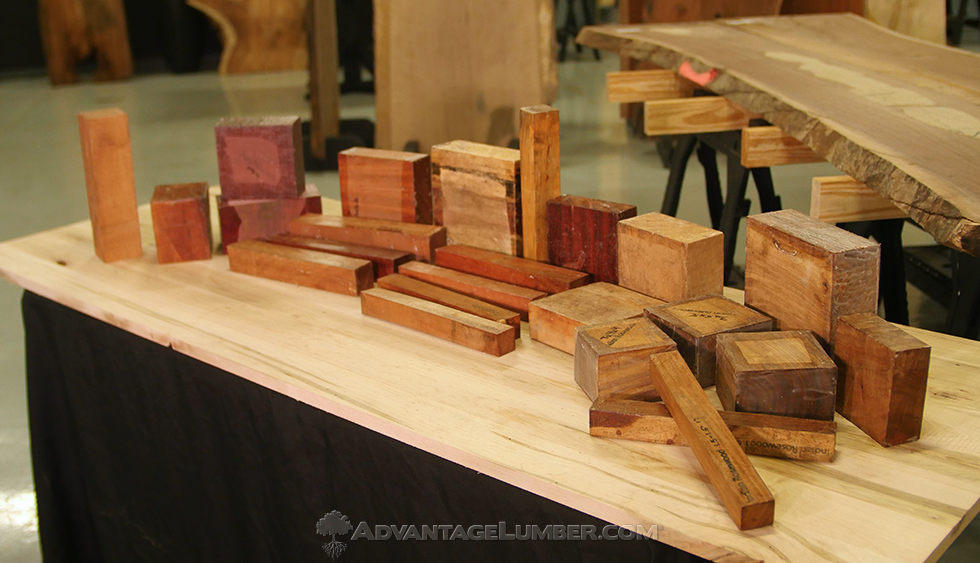Canary Turning Lumber

Canarywood Turning Blanks
Buy Online
All Turning Blanks
Shop NowCanarywood Specs
- Scientific Name
- Centrolobium spp.
- Common Name(s)
- Canarywood, Canary
- Distribution
- South America (from Panama down to southern Brazil)
- Average Dried Weight
- 52 lbs/ft3 (830 kg/m3)
- Specific Gravity
- Basic: .65, 12% MC: .83
- Janka Hardness
- 1,520 lbf (6,750 N)
- Modulus of Rupture
- 19,080 lbf/in2 (131.6 MPa)
- Elastic Modulus
- 2,164,000 lbf/in2 (14.93 GPa)
- Crushing Strength
- 9,750 lbf/in2 (67.2 MPa)
- Shrinkage
- Radial: 2.4%, Tangential: 5.6%, Volumetric: 8.4%, T/R Ratio: 2.3
- Appearance
- Heartwood color can vary a fair amount, from a pale yellow-orange to a darker reddish brown, usually with darker streaks throughout. Pale yellow sapwood is sharply demarcated from heartwood. Color tends to darken and homogenize with age: see the article Preventing Color Changes in Exotic Woods for more information.
- Texture
- Grain is typically straight, but can be irregular or wild on some pieces. Uniform fine to medium texture with good natural luster. Endgrain: Diffuse-porous; large pores in no specific arrangement, few; solitary and radial multiples of 2-3; mineral/gum deposits occasionally present; growth rings indistinct; rays not visible without lens; parenchyma varies depending on species: can be vasicentric, aliform, and confluent.
- Rot Resistance
- Rated as very durable in regard to decay resistance, as well as being resistant to termite and marine borer attack.
- Workability
- Easy to work with both hand and machine tools, though some tearout can occur during planing on pieces with wild or irregular grain. Good dimensional stability. Turns, glues and finishes well.
- Odor
- Canarywood has a distinct scent when being worked.
- Allergies/Toxicity
- Besides the standard health risks associated with any type of wood dust, no further health reactions have been associated with Canarywood.
- Pricing/Availability
- Generally available in good sizes of lumber, and occasionally also offered as turning blanks. Prices should be moderate for an imported hardwood.
- Sustainability
- This wood species is not listed in the CITES Appendices or on the IUCN Red List of Threatened Species.
- Common Uses
- Construction lumber, railroad crossties, flooring, veneers, boatbuilding, furniture, cabinetry, and turned items.
- Comments
- Some pieces of Canarywood can be almost rainbow colored—with dark red streaks, along with the natural orange, yellow, and brown coloration. Canarywood is said to have good acoustic properties, and is sometimes used for speaker enclosures and entertainment system cabinets.
Canarywood Turning Blank Prices
Canarywood Pen Turning Blank
$2.00
Buy Online
2″ x 2″ x 12″ Canarywood Turning Blank
$4.80
Buy Online
3″ x 3″ x 12″ Canarywood Turning Blank
$12.80
Buy Online
3″ x 8″ x 8″ Canarywood Turning Blank
$18.40
Buy Online




